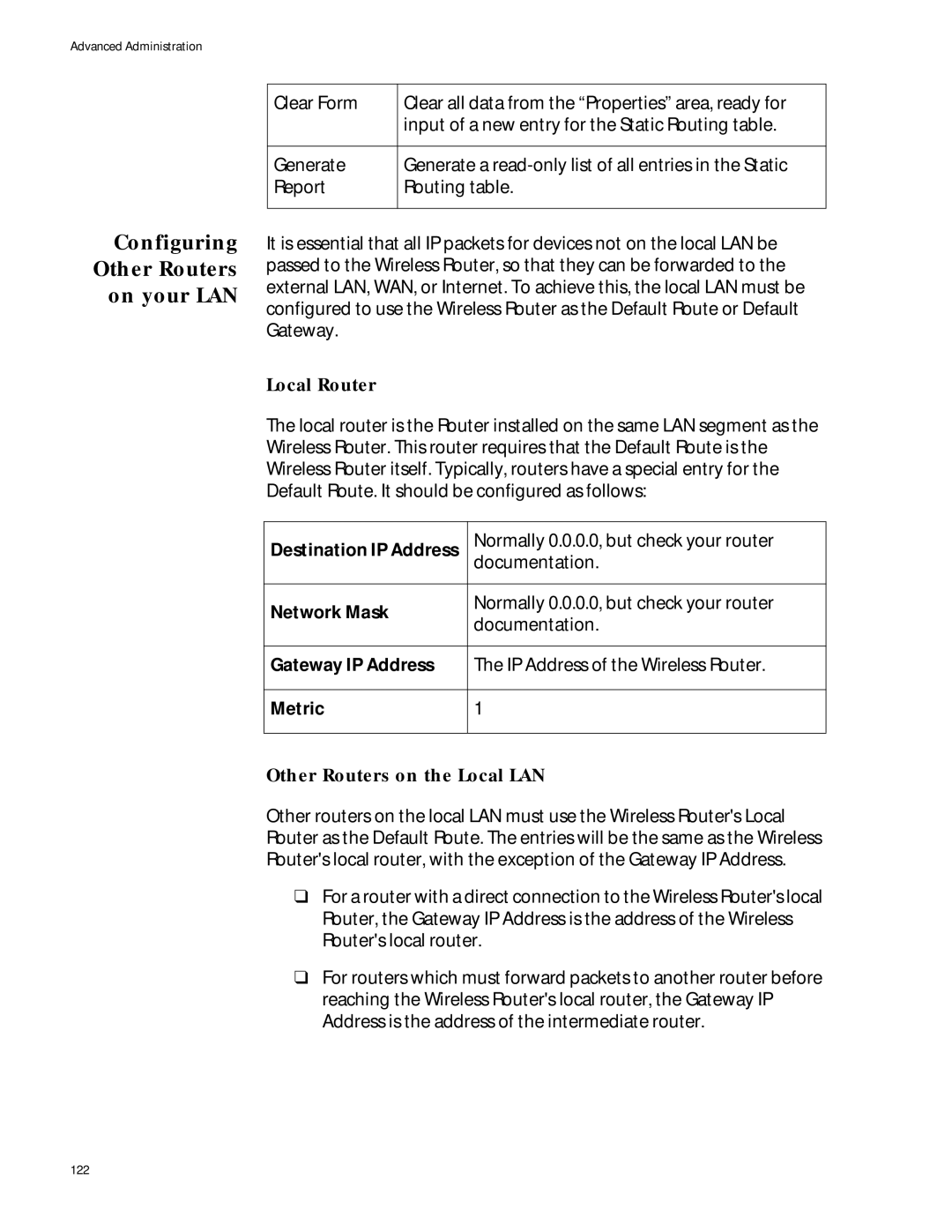Advanced Administration
Clear Form | Clear all data from the “Properties” area, ready for |
| input of a new entry for the Static Routing table. |
|
|
Generate | Generate a |
Report | Routing table. |
|
|
Configuring
Other Routers
on your LAN
It is essential that all IP packets for devices not on the local LAN be passed to the Wireless Router, so that they can be forwarded to the external LAN, WAN, or Internet. To achieve this, the local LAN must be configured to use the Wireless Router as the Default Route or Default Gateway.
Local Router
The local router is the Router installed on the same LAN segment as the Wireless Router. This router requires that the Default Route is the Wireless Router itself. Typically, routers have a special entry for the Default Route. It should be configured as follows:
Destination IP Address | Normally 0.0.0.0, but check your router | |
| documentation. | |
|
| |
Network Mask | Normally 0.0.0.0, but check your router | |
documentation. | ||
| ||
|
| |
Gateway IP Address | The IP Address of the Wireless Router. | |
|
| |
Metric | 1 | |
|
|
Other Routers on the Local LAN
Other routers on the local LAN must use the Wireless Router's Local Router as the Default Route. The entries will be the same as the Wireless Router's local router, with the exception of the Gateway IP Address.
❑For a router with a direct connection to the Wireless Router's local Router, the Gateway IP Address is the address of the Wireless Router's local router.
❑For routers which must forward packets to another router before reaching the Wireless Router's local router, the Gateway IP Address is the address of the intermediate router.
122
